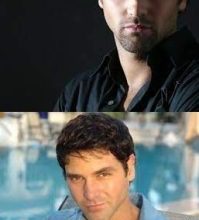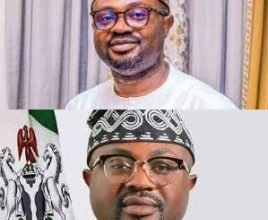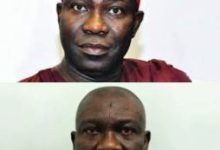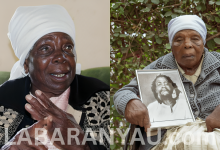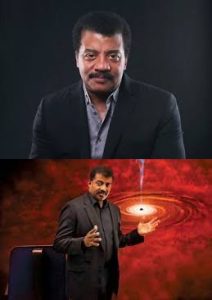
Neil deGrasse Tyson Biography
American astronomer Neil deGrasse Tyson, born in New York, New York, on October 5, 1958, popularized science through his writings and frequent radio and television appearances.
Tyson’s fascination with astronomy began when he was nine years old and visited the Hayden Planetarium at the American Museum of Natural History in New York City. Tyson graduated from Harvard University in Cambridge, Massachusetts, with a bachelor’s in physics in 1980, and the University of Texas at Austin with a master’s in astronomy in 1983. He started a question-and-answer column for the well-known astronomy publication StarDate at the University of Texas, and he eventually used information from that column in his books Merlin’s Tour of the Universe (1989) and Just Visiting This Planet (1998).
At Columbia University in New York City, Tyson later obtained a master’s degree in astrophysics in 1989 and a PhD in the subject in 1991. From 1991 to 1994, he worked as a postdoctoral research associate at Princeton University before becoming a staff scientist at the Hayden Planetarium. He conducted study on issues pertaining to galaxy structure and evolution. In 1995, he was named the Hayden Planetarium’s acting director; he was named director in 1996.
In addition to writing monthly pieces for Natural History magazine from 1995 to 2005, he also published an autobiography in 2000 called The Sky Is Not the Limit: Adventures of an Urban Astrophysicist. Some of these essays were gathered in Death by Black Hole: And Other Cosmic Quandaries (2007). His latter works include Letters from an Astrophysicist (2019) and Astrophysics for People in a Hurry (2017).
Tyson led a comprehensive renovation of the building, which was completed and inaugurated as the Hayden Planetarium in 2000. The new planetarium’s exhibit divided up the bodies of the solar system into many categories. Pluto was categorized among the Kuiper belt objects rather than the Jovian or terrestrial planets. That choice—made six years before the International Astronomical Union classified Pluto as a dwarf planet—proved to be highly contentious, and Tyson received a flood of irate messages as a result.
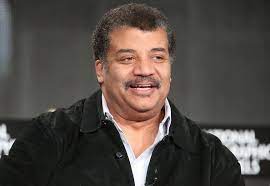
. In The Pluto Files: The Rise and Fall of America’s Favorite Planet, which he wrote about the experience for in 2009, he attributed some of the sentimental attachment to Pluto’s planethood to cultural elements like the fact that Pluto was the only planet discovered by an American (astronomer Clyde Tombaugh), and that it was the inspiration for the popular cartoon character Mickey Mouse’s dog.
In addition to writing numerous books, Tyson was a well-known advocate for science on radio and television. He frequently made appearances on talk shows including The Colbert Report and The Daily Show with Jon Stewart. The four-episode television series Origins, which explored the beginnings of the universe, stars, planets, and life, was hosted by him in 2004. He hosted the television program NOVA scienceNOW from 2006 to 2011 and, starting in 2009, he also served as host of the weekly radio program StarTalk.
In addition to writing many companion books, including Cosmic Queries: StarTalk’s Guide to Who We Are, How We Got Here, and Where We’re Going (2021), Tyson presided over a television chat show modeled on his radio program beginning in 2015. He served as the host of the 2014 television program Cosmos: A Spacetime Odyssey, which he referred to as a “continuation” of Carl Sagan’s well-liked 1980 program Cosmos. He occasionally appeared as himself in movies and television shows. In the 2016 animated children’s film Ice Age: Collision Course, he provided the voice of a fictional weasel.
Numerous women accused Tyson of sexual assault in 2018. His initiatives were put on hold as National Geographic and Fox, the networks he worked with, looked into the allegations. The investigations were finished in 2019 and production on his numerous shows began again. Later on in the year, the American Museum of Natural History declared that their inquiry into the allegations was complete and that Tyson would continue to lead the Hayden Planetarium.
Neil deGrasse Tyson Early Life and Education
Tyson, who was born on October 5, 1958, in New York City, fell in love with the stars at a young age. He first experienced stargazing when he was nine years old while visiting the Hayden Planetarium at the Museum of Natural History. Later, Tyson acquired his own telescope and attended classes at the Planetarium. He used to observe the skies as a teenager while standing on the apartment complex’s roof.
Tyson, a strong student, earned his high school diploma in science from the Bronx in 1976. In the following years, he obtained a physics bachelor’s degree from Harvard University and an astrophysics doctorate from Columbia University in 1991. Tyson obtained employment at the Hayden Planetarium after working as a post-doctoral researcher at Princeton University for a few years.
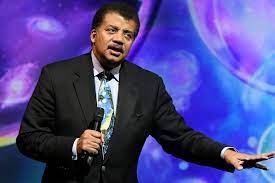
Neil deGrasse Tyson Career Highlights
Director of the Hayden Planetarium
Tyson subsequently was appointed director of the Hayden Planetarium and oversaw a significant refurbishment of the building, contributing to its design and raising finances. When the $210 million makeover was finished in 2000, the facility had been updated to give visitors a modern perspective on astronomy. At the time, removing Pluto from the planet display was one of Tyson’s most contentious choices. His description of Pluto as a minor planet elicited significant reactions from some of the visitors. While some people demanded the return of Pluto, the International Astronomical Union in 2006 followed Tyson’s example. Pluto is now formally recognized as a minor planet by the organization.
Neil deGrasse Tyson Host of ‘NOVA ScienceNow’
In addition to his work at the planetarium, Tyson has discovered additional ways to raise scientific literacy across the country. He once stated that one of his objectives was to “bring the universe down to Earth in a way that further excites the audience to want more.” Tyson has spread his message across the media. From 2006 to 2011, he hosted the NOVA ScienceNow documentary series. Tyson has increased diversity in astrophysics and lowered barriers between scientists and the general public. He is one of the few Black people working in his industry.
Neil deGrasse Tyson Presidential Advisor to George Bush
Tyson has also advised presidents in the past. The physicist was named by President George W. Bush to a panel on the future of the aerospace sector in 2001. Three years later, Tyson participated on another commission to look into American space strategy.
Neil deGrasse Tyson Celebrity Scientist & TV Appearances
Tyson is one of the most sought-after scientists today. He conducts lectures all throughout the nation and is a favorite of the media anytime a significant scientific subject makes the headlines. The ability of Tyson to make complex ideas understandable to all audiences, as well as his oratory prowess and sense of humor, have earned him appearances on programs like Real Time with Bill Maher, The Colbert Report, and The Daily Show.
‘StarTalk’ Podcasts & TV
Tyson started presenting StarTalk Radio in 2009; it is a science-based conversation show with humorous co-hosts. Due to its popularity, StarTalk TV and its spinoff podcasts StarTalk All-Stars and StarTalk Playing with Science were both introduced in 2015.
‘Cosmos’
Tyson was the executive editor and host of the 13-episode television series Cosmos: A Space-Time Odyssey in 2014. Cosmos, a legendary science documentary, was revived for the series. The original program, hosted by Carl Sagan, gave the general public a better knowledge of the beginnings of life and our cosmos.
Neil deGrasse Tyson Books
The Pluto Files: The Rise and Fall of America’s Favorite Planet (2009) and Death by Black Hole and Other Cosmic Quandaries (2006) are only two of Tyson’s works for the general audience. Astrophysics for People in a Hurry (2017) was followed by Letters from an Astrophysicist (2019), which was a collection of his comments to admirers and detractors.
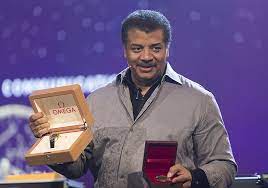
Neil deGrasse Tyson Sexual Misconduct Allegations
The well-known astrophysicist was accused of sexual assault by three women, three of whom came forward in late 2018, according to the religion and spirituality website Patheos. One of the women said Tyson drugged and raped her in 1984. Tyson responded with a lengthy Facebook post disputing each woman’s version of events and welcoming additional inquiries. The Fox and National Geographic networks, which broadcast Cosmos and StarTalk, jointly announced in August 2019 that they had finished their investigations and will continue to screen Tyson’s shows.
Neil deGrasse Tyson Wife and Children
Tyson and his wife, Alice Young, a mathematical physicist with a PhD, reside in New York City. Miranda and Travis are the couple’s two children.
Neil deGrasse Tyson Quick Fact
- Birth Year: 1958
- Birth date: October 5, 1958
- Birth State: New York
- Birth City: New York
- Birth Country: United States
- Gender: Male
- Best Known For: Neil deGrasse Tyson is an American astrophysicist who hosted ‘NOVA ScienceNow’ and makes media appearances to encourage science and space exploration.
- Industries
- Science and Medicine
- Television
- Writing and Publishing
- Astrological Sign: Libra
- Schools
- Harvard University
- Columbia University
- Bronx High School of Science
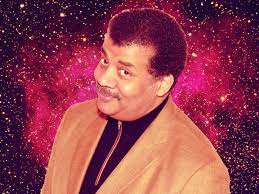
What did Neil deGrasse Tyson get famous for?
Tyson has been instrumental in making astrophysical ideas and findings more widely known. Dr. Tyson started penning the “Universe” column for Natural History magazine in 1995. Death by Black Hole and Other Cosmic Quandaries, an anthology, was released in 2007.
What was Neil deGrasse Tyson childhood like?
His father, Cyril deGrasse Tyson, was a sociologist, and his mother, Sunchita Feliciano Tyson, was a gerontologist. From 1972 to 1976, Neil attended the Bronx High School of Science, where he developed an interest in astronomy following a field trip to a planetarium.
What jobs has Neil deGrasse Tyson done?
Tyson has served as the Planetary Society’s vice president, president, and board chairman. Up until 2011, he served as the host of the PBS program Nova ScienceNow. In November 2006, he participated in and delivered a speech at the Beyond Belief: Science, Religion, Reason, and Survival symposium.
Did Neil deGrasse Tyson discover anything?
Answer and explanation: Neil deGrasse Tyson has made no significant discoveries. He is most known for his work as a science communicator who makes the public aware of the discoveries of science. He has held the position of host for the television program Cosmos, which explores a variety of facets of the cosmos.
What did Neil deGrasse Tyson do to change the world?
Answer and explanation: By contributing to the studies that made Pluto a dwarf planet, Neil deGrasse Tyson altered the course of history. He served on a NASA council and made significant contributions to preserving the Hayden Planetarium.
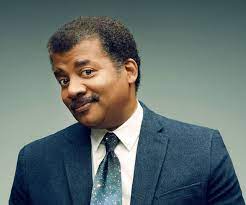
Is Neil deGrasse Tyson a mathematician?
Despite the fact that Neil has a PhD in astrophysics and Bill has a bachelor’s degree in mechanical engineering, both men are thought to have exceptional mathematical skills when compared to the ordinary individual.
Why did Neil deGrasse Tyson go to Harvard?
Tyson’s life and work have been inspired by four Ivy League universities. Tyson, who was born and reared in New York City, knew that he intended to pursue a career in astrophysics. Carl Sagan, a professor at Cornell, sought him out, but he chose Harvard instead because he wanted to wrestle and row.
Discover more from Labaran Yau
Subscribe to get the latest posts sent to your email.


